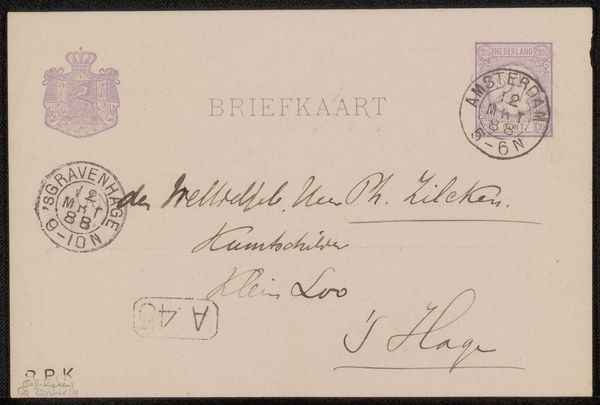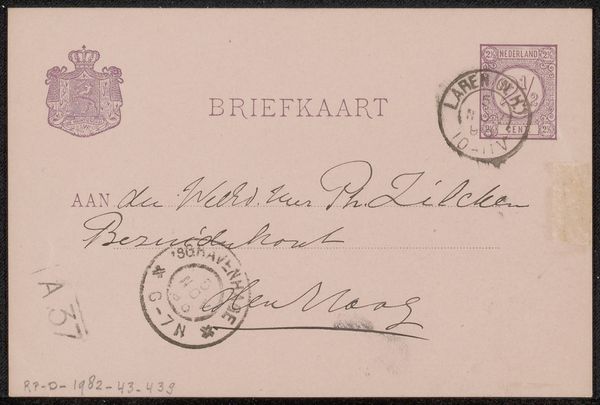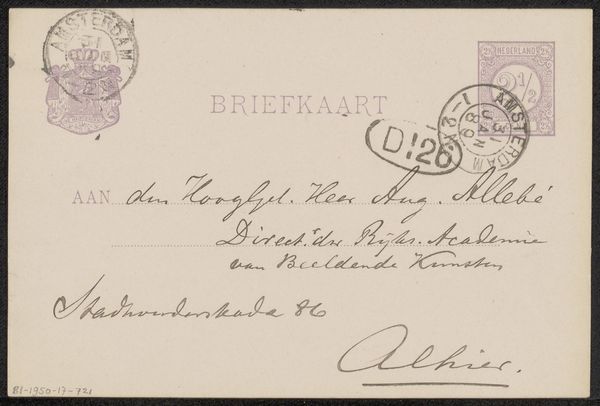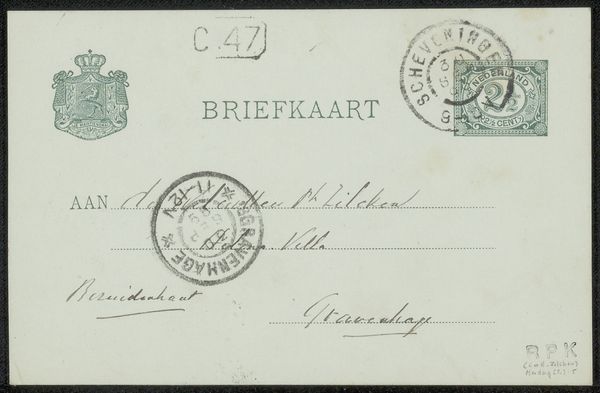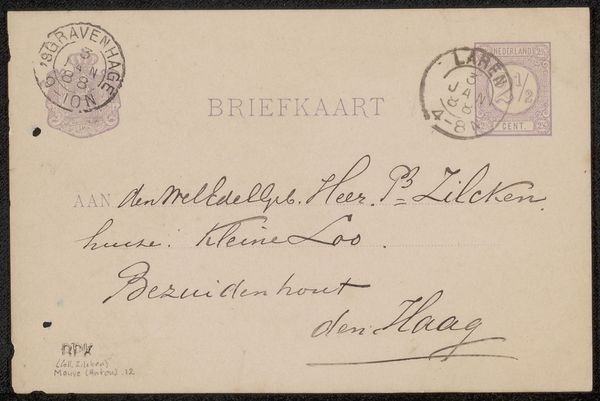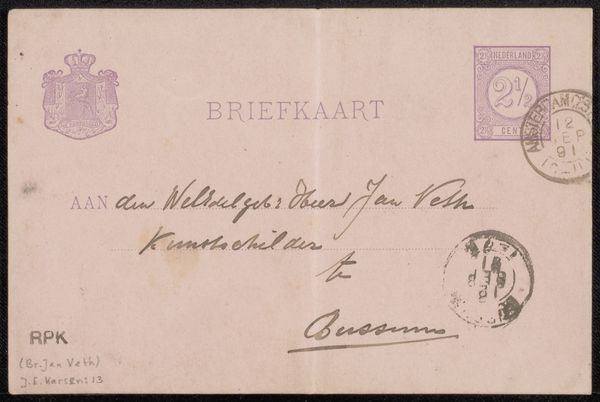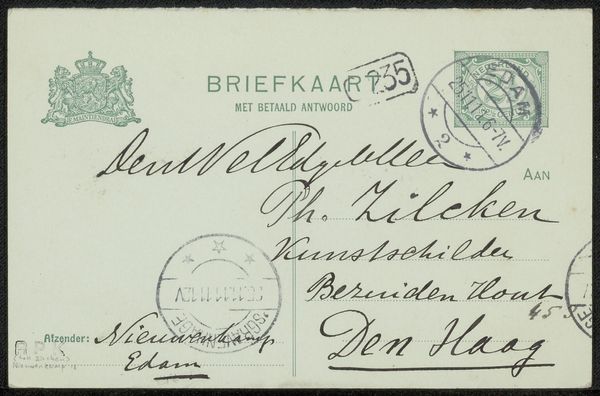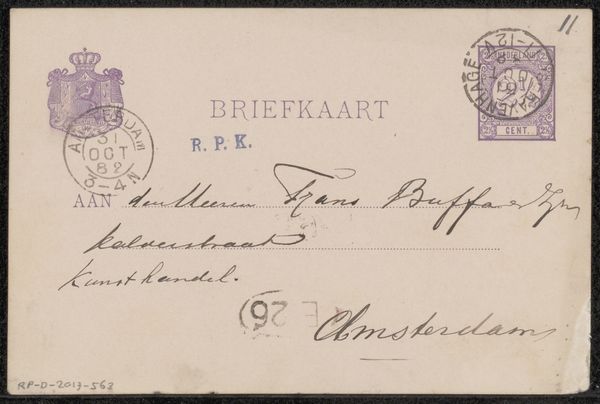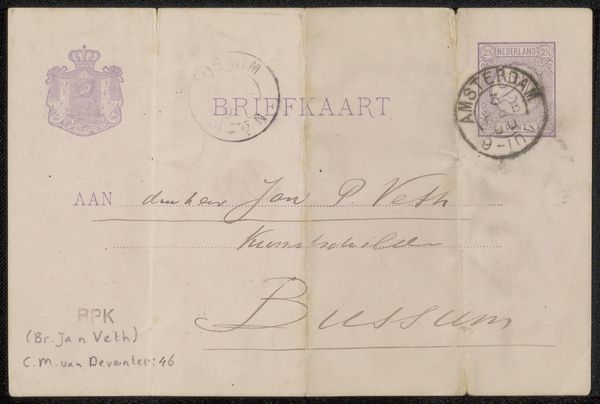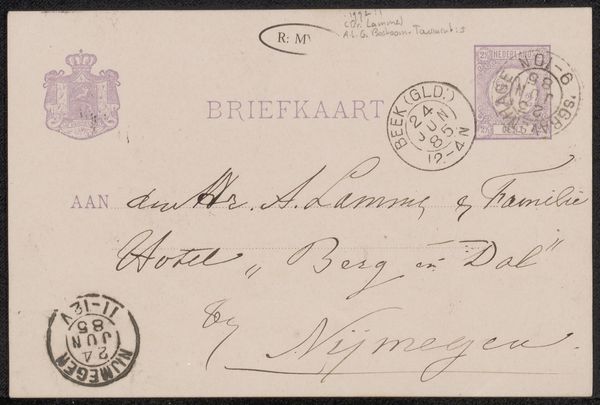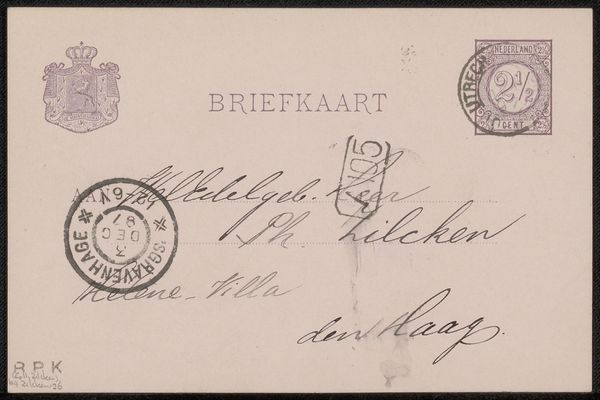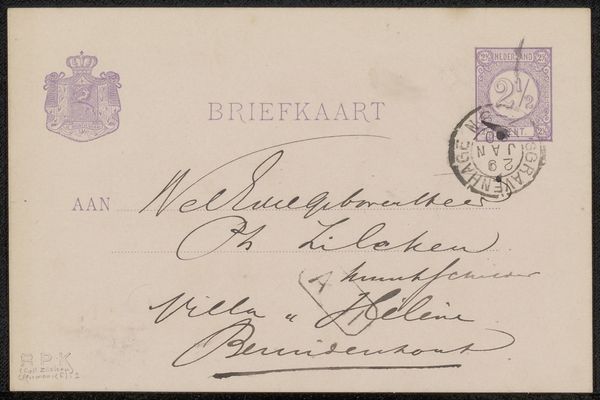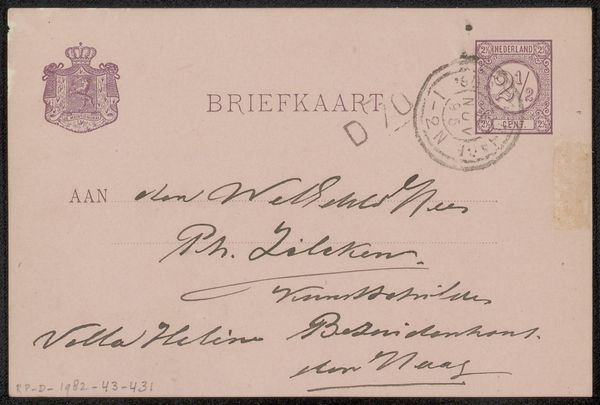
drawing, pen
#
drawing
#
pen work
#
sketchbook drawing
#
pen
Copyright: Rijks Museum: Open Domain
Curator: Let's discuss "Briefkaart aan Philip Zilcken," a pen drawing, potentially from 1896, by Willem van Konijnenburg. Editor: Immediately, I’m struck by how fragile and precious this seemingly mundane object feels. The script, the fading ink – it’s almost a relic. Curator: Precisely. Consider the formal arrangement of elements: the deliberate placement of the stamp, the seal, the hand-written script itself, all within the rectangular frame. The balance is exquisitely considered, transforming utilitarian text into aesthetic form. Editor: Yes, but those graphic elements also carry so much historical and personal weight. The Dutch coat-of-arms is right up in the left corner—a symbolic declaration of official communication. The carefully printed words 'Briefkaart,' now a near-obsolete object. They evoke an era where handwriting defined individual expression and correspondence moved at a different rhythm. Curator: Indeed, the handwriting becomes line, texture. Observe how van Konijnenburg manipulates the weight of the pen strokes, creating a rhythm across the page. It’s not just information; it's a controlled orchestration of dark and light, a structural interplay. Editor: And doesn't that "Kunstschilder" after the recipient's name—'artist'—also suggest a message from one creator to another, perhaps? A secret language within the script? We can assume that this was written specifically from one artist to another in an intentional act of correspondence. Curator: An intriguing observation! The artist subtly elevating the everyday communication to the level of an art object, where form is not simply subservient to function. The symmetry, the implied geometries within, demonstrate a sophisticated awareness. Editor: It speaks volumes, silently. What began as a mere method to dispatch news evolved to stand the test of time as a preserved exchange, full of historic significance for us now. Curator: Agreed, by considering form and structure, we are able to recognize that the simplest object can embody a deeper meaning and intent. Editor: I concur. These humble ephemera often encapsulate grand narratives if we only allow ourselves the privilege to consider the world from the past's perspective.
Comments
No comments
Be the first to comment and join the conversation on the ultimate creative platform.
